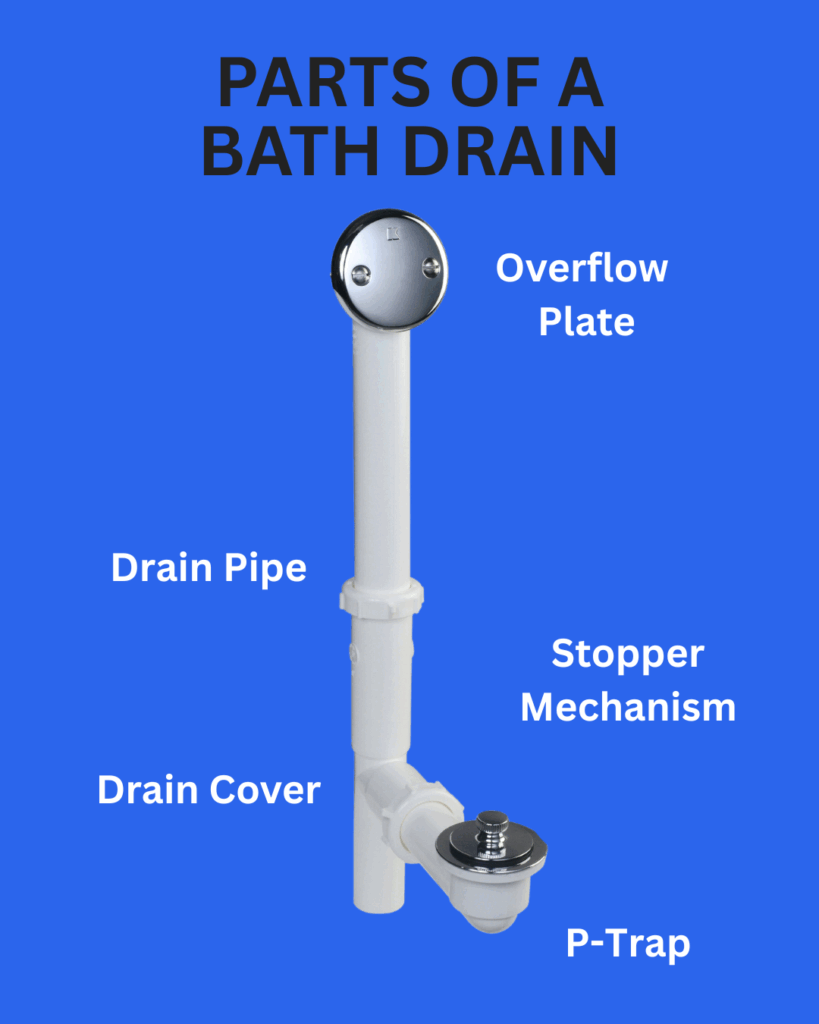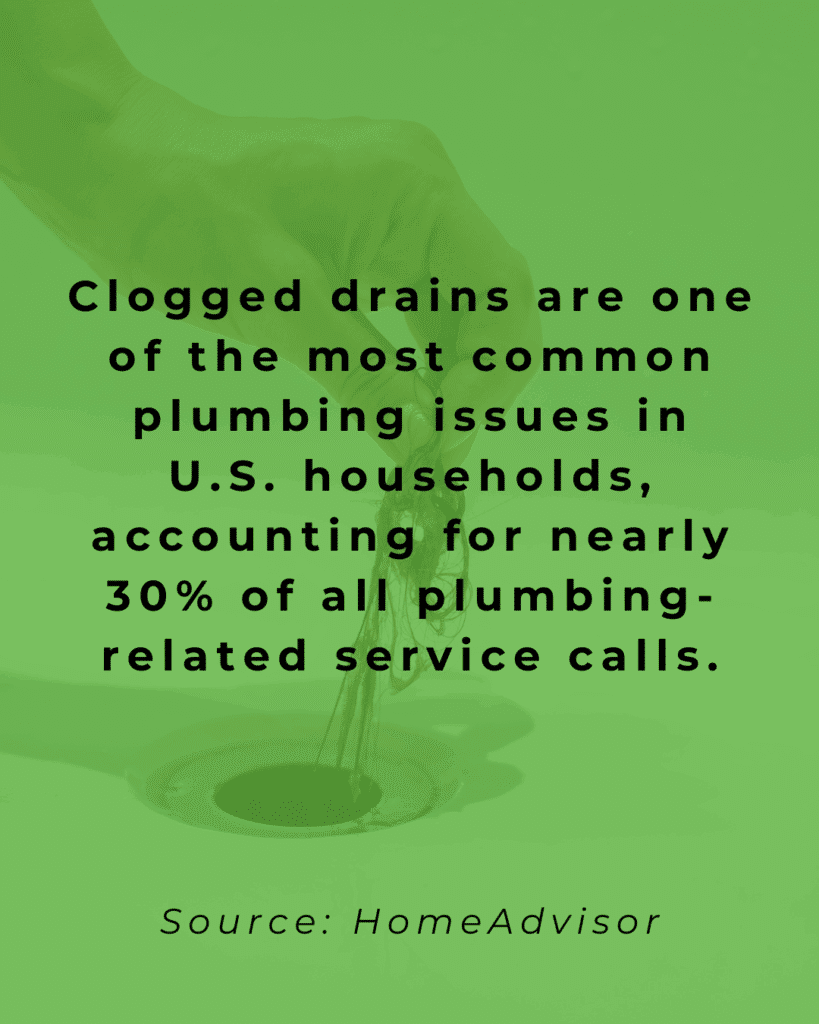Your bath drain may not seem like a big deal. It’s small, it’s out of sight, and you probably don’t think about it much. But if it starts to clog, smell, or leak, you’ll notice fast. This simple plumbing part plays a huge role in how clean and functional your bathroom stays.
As home inspectors, we see bath drain issues in homes all the time. Many of these problems are small at first but grow into expensive repairs. With a little knowledge and care, most of them can be avoided. So let’s break down what your bath drain does, what can go wrong, and how to keep it in great shape.
What a Bath Drain Does and Why It Matters
Every time you take a bath or shower, water needs to exit the tub quickly and efficiently. That’s the job of your bath drain. It directs used water through your plumbing and out of your home. But it also does more. It helps keep sewer gases out of your living space and manages overflow to prevent flooding. It protects subfloors and nearby rooms from moisture. When it’s working, you barely notice. But when it fails, it can cause serious damage. That’s why understanding your bath drain and how it fits into your plumbing system is essential for homeowners.
Parts of a Bath Drain You Should Know
Your bath drain includes several connected components. Each one serves a purpose, and when one fails, the whole system can struggle.
Here’s what you’ll find:
- Drain Cover: Sits at the base of the tub. It blocks larger objects from falling in.
- Stopper Mechanism: Controls whether water stays in or drains out. This could be a toe-touch, push-and-pull, trip lever, or lift-and-turn stopper.
- Overflow Plate: Mounted higher up the tub wall, it redirects water if it gets too high. This helps avoid overflows and water damage.
- Drain Pipe and P-Trap: Found beneath the tub, this part holds water to prevent sewer gases from escaping and allows water to flow away properly.
Each of these pieces needs to be installed correctly and kept clean to make sure the bath drain system works as it should.

What Can Go Wrong with Your Bath Drain
There’s no shortage of issues that can develop in a bath drain. Some you might notice right away. Others stay hidden until water damage or mold shows up. During home inspections, we often discover problems like:
- Clogs from hair, soap scum, or small objects
- Slow-draining tubs that leave water behind for minutes
- Foul odors caused by bacteria, trapped water, or sewer gas
- Leaks under the tub or around drain fittings
- Rust or corrosion on metal parts, especially in older homes
- Improper installation that causes water to back up or flow the wrong way
Even newer homes can experience bath drain problems if maintenance is neglected or if low-quality materials were used during construction.
Why These Bath Drain Problems Happen
It’s helpful to know what causes these issues so you can avoid them. Let’s look at the most common reasons bath drains stop working properly:
- Hair buildup is the top cause of clogs. Over time, hair binds with soap and blocks the drain.
- Bath products like salts, oils, and fizzing bombs may leave residue that coats your pipes.
- Low-quality stoppers may fail, leaving the tub unable to hold water or drain completely.
- Outdated plumbing in older homes often uses metal pipes that corrode or leak.
- Shifting or settling in the home’s foundation may cause drain pipes to crack or pull loose.
- Improper DIY fixes sometimes create more problems than they solve, especially if they leave gaps or misalign the drain.
Every part of your home works together. If your plumbing shifts or a seal wears out, the bath drain could be the first place you notice it.
How a Home Inspector Checks Your Bath Drain
During a home inspection, we look closely at the bath drain to check for visible and hidden problems. A simple surface look isn’t enough. Here’s what we do:
- Run water through the tub to see how fast it drains.
- Test the stopper to see if it seals and releases water properly.
- Inspect the overflow area for signs of leaks or staining.
- Check below the tub, especially in ceilings or crawl spaces under bathrooms, to find hidden water damage or moisture.
- Look at fittings and pipes around the tub and under the house for any signs of leaks or corrosion.
- Note the materials used, like PVC or metal, and whether they meet current building codes.
This thorough inspection of the bath drain gives homeowners a better understanding of what’s working and what might need fixing.
Smart Maintenance Tips for a Healthy Bath Drain
You don’t need a plumber every time you clean your bath drain. With these easy habits, you can keep it working well:
- Use a drain strainer to catch hair before it enters the pipe.
- Wipe down your stopper every week to remove built-up grime.
- Flush with boiling water monthly to clear soap and oils.
- Use baking soda and vinegar occasionally for a safe, natural clean.
- Avoid harsh chemicals which can damage your pipes over time.
- Don’t ignore slow drains or weird smells. Early action can save you a lot of money later.
These tips take only a few minutes but can extend the life of your bath drain system.

Signs Your Bath Drain Needs Help Fast
Sometimes the signs of trouble are clear. If you notice any of the following, don’t wait to act:
- Water pooling in the tub after you’ve pulled the stopper
- Gurgling sounds from the tub or nearby drains
- Brown or yellow stains on ceilings or walls below a bathroom
- Musty or sewer-like smells that linger even after cleaning
- Bubbling around the tub drain when water runs elsewhere in the house
- A stopper that’s stuck or doesn’t function anymore
These all point to a bath drain issue that needs inspection or repair. Left untreated, they can lead to mold, rotting wood, or thousands in water damage.
Why Bath Drain Issues Should Never Be Ignored
Even if it seems minor, a bath drain problem can create major headaches if you let it go. Leaks can damage subfloors and ceilings, while clogs can stress your entire plumbing system. If sewer gases leak through an empty or faulty trap, you might face health risks. Small drips can cause mold behind walls and under tubs. And even a slight leak can spike your water bill over time. These issues also affect your home’s value. Buyers notice water stains and drainage issues, and those can turn into deal-breakers. That’s why it’s smart to take action at the first sign of trouble.
Final Thoughts
Taking care of your bath drain might not be the most glamorous part of homeownership, but it matters. A clean, functional drain keeps your home safe, your bathroom fresh, and your plumbing system running smoothly.
Don’t wait for problems to show up. Regular checks, good habits, and a professional eye during home inspections make all the difference. Concerned about your bath drain or just want peace of mind? Schedule a home inspection today. Our team will make sure your plumbing system is safe, sealed, and ready for years to come. Let’s keep your home in great shape together.
